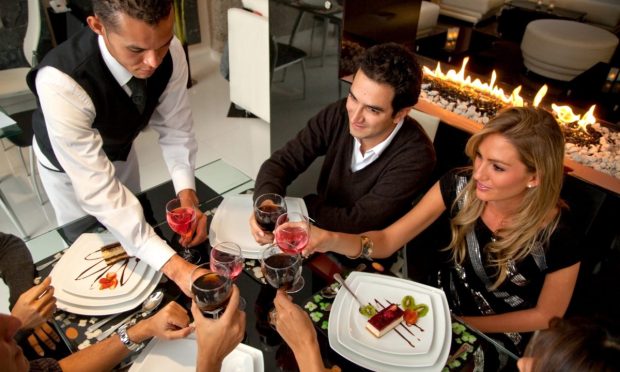Despite Inflation Challenges, Restaurants Predict Growth in 2022

For all the labor, supply chain and inflation challenges that restaurants face today, a sense of optimism remains. Research from PYMNTS’ March study, Main Street Economic Health Survey: Navigating Economic Uncertainty, found that 63% of food, entertainment and accommodations businesses predict that they will see revenue gains in 2022 relative to 2021.
Read the study: Main Street Economic Health Survey: Navigating Economic Uncertainty
Moreover, the study, created in collaboration with Melio, which draws from a survey of more than 500 business owners on Main Street U.S.A. conducted between January and February, found that these predicted gains would build on an already restorative year for many of these businesses, with more than half (54%) reporting that their revenue increased in 2021.
Read more: New Survey Shows Main Street Businesses Fighting Economic Uncertainty With 3 Key Investments
Still, many restaurants are unable to enjoy the extent of the revenue opportunity posed by great consumer desire for restaurant meals, given that labor constraints make it difficult or impossible to meet this demand.
“[Restaurants are] still struggling. So, revenue’s up, dining is up, and it really could be a boom market for them if they could get the labor,” Andrew Robbins, CEO of Software-as-a-Service (SaaS) customer experience management (CXM) solutions provider Paytronix, told PYMNTS’ Karen Webster in a recent interview. “There are still people who are shutting down, not doing the full day that they would normally do and closing some nights, so they don’t overwork the team — so maybe close a Monday, Tuesday night, but work people longer hours Friday/Saturday. It’s still a real problem.”
Related news: Labor Challenges Stifling Would-Be Restaurant Boom, Paytronix CEO Says
While implementing automated technologies and simple-to-use digital systems can reduce labor needs to a certain extent, there is no instant, easy fix.
John Haggai, president and chief operating officer of Burton’s Grill and Bar and Red Heat Tavern, explained in an interview with PYMNTS for the January/February edition of the Order to Eat Tracker®, created in collaboration with Paytronix, how these restaurants approach the addition of new digital tools.
“The integration and implementation of technology costs time, money and dedicated resources to get it right from the customer and business end,” he said. “There are a lot of products out there, and the technology continues to evolve quickly. Being flexible is critical because we have learned that things change quickly, and the future is still unpredictable.”
See also: Burton’s Grill and Bar on How Technology Can Help Restaurants Meet Customers’ Digital Expectations
Notably, at the time of the study, perhaps due to the survey overlapping with the Omicron surge, a greater share of food, entertainment and accommodations businesses expressed concern about COVID-19 related issues than about inflation, with 55% citing the former and 49% the latter as obstacles. Additionally, the study found that one in five of these businesses had increased prices in the previous three months.
The challenges posed for restaurants by inflation can vary significantly from region to region. In an interview with PYMNTS, Don Varady, co-founder of Clean Eatz, a health-focused café chain with nearly 70 locations, noted that prices had not changed much in his area, though he had seen significant increases in other areas.
“It’s not going to surprise me if pricing does go up with a lot of restaurant chains, with the supply chain issues that everybody is experiencing and inflation,” he said. “I just haven’t noticed to be a really big problem yet.”
You may also like: Inflation Poses Challenges for Emerging Restaurant Brands’ Expansions
